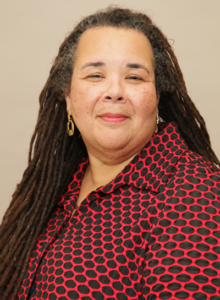
Ramblings About The Proximity of Violence
The proximity of violence is the terror. Violence is not new – it is, for much of our society and in many, many ways, a preferred way of life. The illusion is that violence can be controlled, patrolled, contained, and then “utilized” when needed – like a genie in and out of the bottle at whim. The nature of violence is that it does not behave based upon “common sense” or consensus. The latest massacre happened in Orlando (unless, of course, another happens before this blog is uploaded). The massacre — the worst mass shooting in the history of the United States — began when the gunman stormed the Pulse Nightclub about 2 a.m. ET with an AR-15 type rifle and a handgun. At least 50 people were killed and more than 50 others were wounded when a gunman opened fire and took hostages at a gay nightclub. The shooter, age 29, was killed in a shootout with law enforcement after a three-hour siege. It is thought that this is a hate crime against our gay and lesbian brothers and sisters. It used to be that this kind of story was about “back then” or “over in that other country” or “those in that other neighborhood.” But now, the proximity of violence is wherever it rears its ugly head --- encroaching closer and closer. The increasingly random and deadly incidences of violence go against the established rules of decorum, but even that seems ridiculous --- can there be rules for violence (???) …. after all – it is hatred. Does hatred have rules of engagement, reasonable rules with underpinnings of morals? If so, the rules have shifted, the violence is becoming more random and less inhibited.
On June 18th my phone rang. I knew that on June 17th a white man had opened fire in a historic black church, in Charleston, South Carolina, killed nine people, including a pastor, during the weekly bible study. The voice on the other end of the phone was a former student and friend who informed me that one of the persons shot at the Bible study was a close relative. She and her family were preparing to go to South Carolina and, in their sorrow and grief, identify the body. The new rules of violence are that proximity has narrowed. What used to happen “out there,” “over there,” --- not here --- is now so near that my phone rings and my once civil teaching job is exposed to and exploded by hearing a former student and friend sob over the phone because of a church shooting. My 88 year old father has stopped going to the movies because he is afraid he will be shot. These shifting rules of violence and hatred have left me and most people I speak with, numb and stymied. What is the responsibility to deter and survive domestic terrorism? The incident which keeps popping into my mind is a disturbing one. Several years ago, after several sessions of a course whose conversation is about oppression and injustice, a student came up to me after class. She was about 62 year’s old, white, recently retired from teaching 4th grade in suburban NJ elementary schools for 37 years. Now, she felt a call to ministry and enrolled in seminary. She came up to me after class and said something like this, “….. Dr. Westfield, I have never heard of the things to which you are referring. All this talk about injustice, bigotry and hatred are just not rrr….” (she stopped short of saying “real.”) I am haunted by the 62 year old retired elementary school teacher who managed to teach for 37 years unaware of the violence, hatred, and prejudice in the world. When I recounted the woman’s words to a friend, he said she was either a liar or psychotic – no one could live in this society and be unaware of the violence – he said. I think lots and lots of people are unaware.
I am afraid that the escalation of violence and the proximity of violence will encourage people to say “this is not real,” then find new ways to live as if it is not. I am afraid that I will have to prepare for a shooter on campus and that one day there will be a shooter on campus. If that were to happen, the issue of proximity would be a trivializing of the problem. If I get shot while I am teaching I’m going to be mad. I can still see the face of the retired 4th grade teacher in my mind’s eye. I wonder if she has “dialed-in” yet to the reality of hatred? If she is pastoring a church, or has friends, or loved ones --- will she be surprised if/when there is a shooter in proximity?